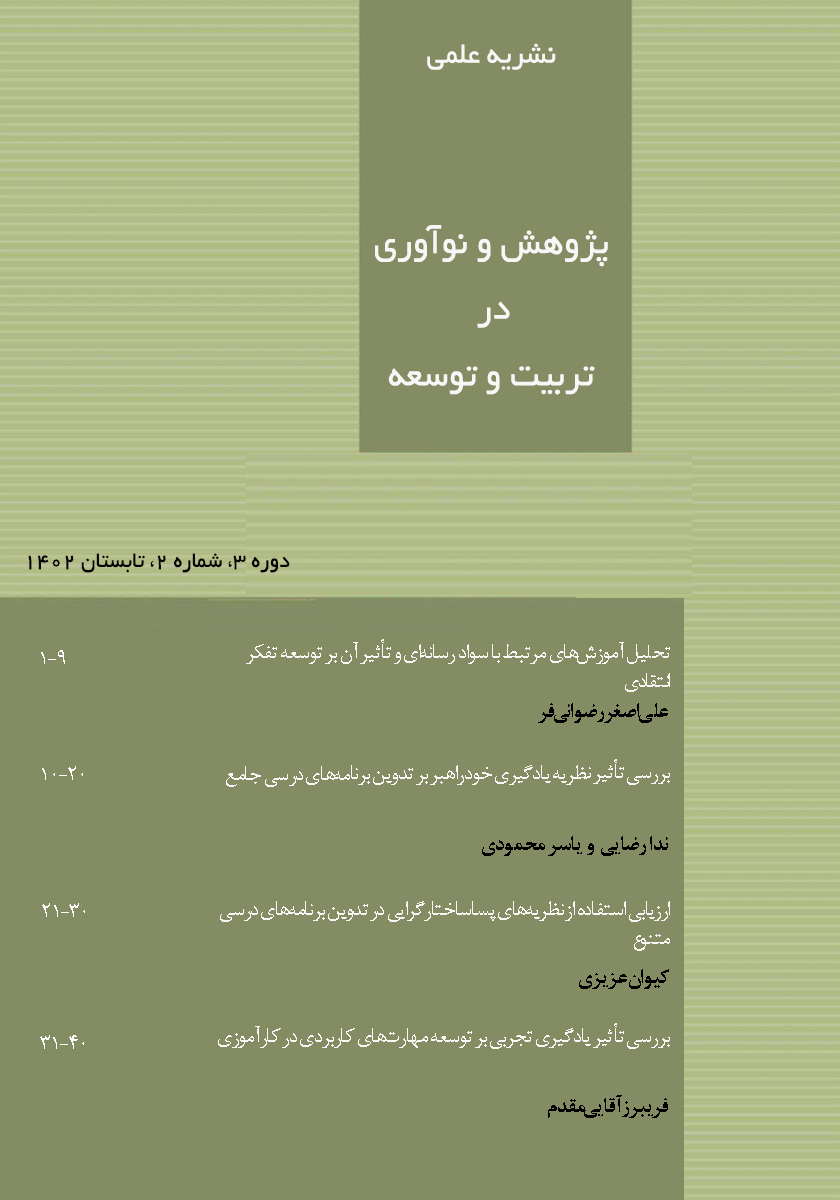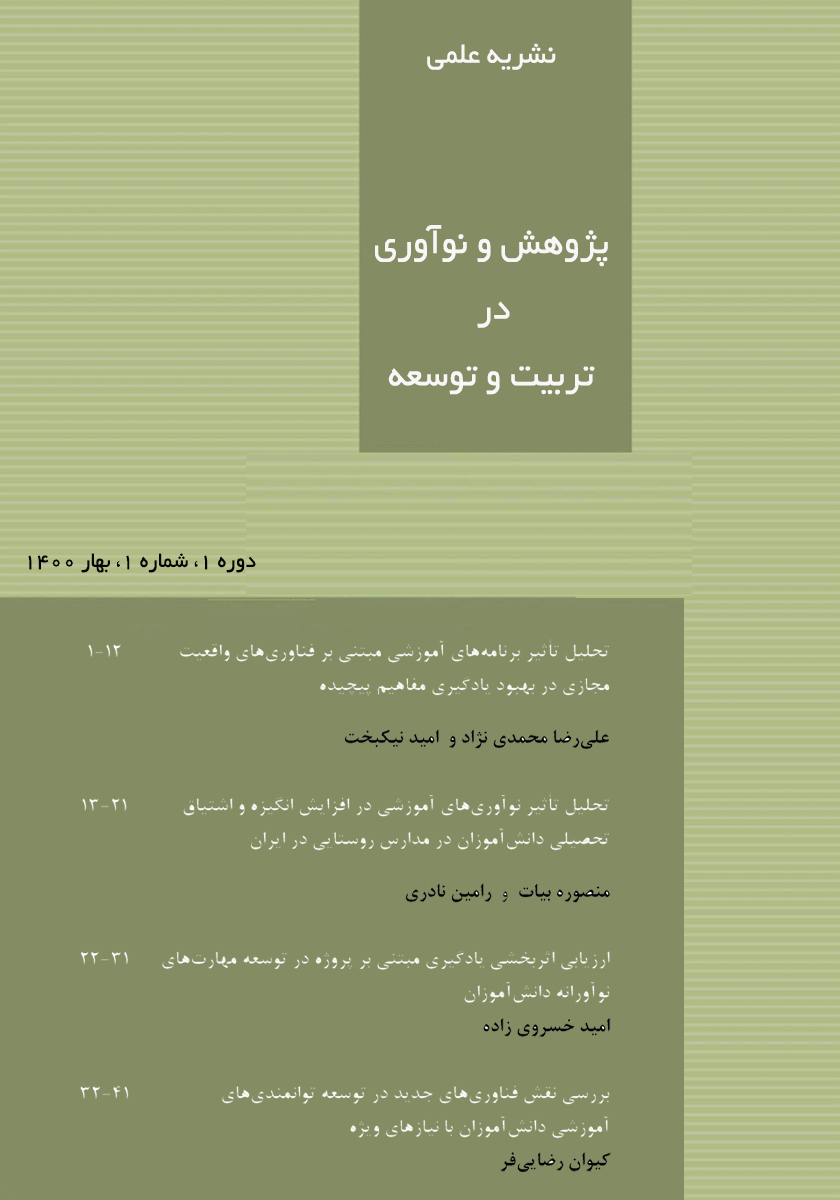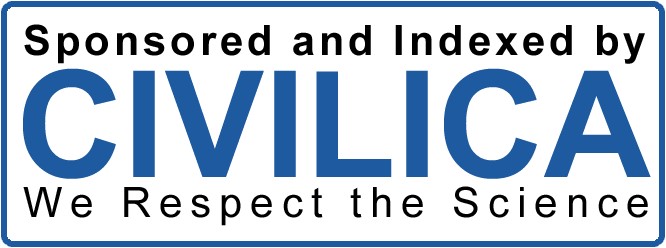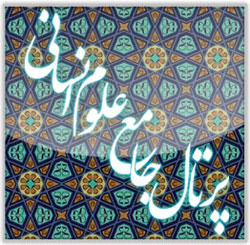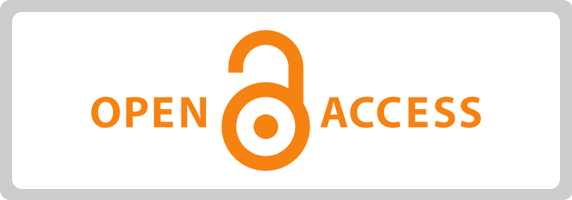تعیین تفاوت توانایی دانشآموزان ایرانی بر حسب سبک پاسخ آنها در آزمون علوم تیمز پایه هشتم 2011، 2015، 2019
کلمات کلیدی:
سبک های پاسخ, آزمون های تیمز2011، 2015 و 2019, پارامتر سئوال, توانایی افرادچکیده
پژوهش حاضر با هدف تعیین تفاوت توانایی دانشآموزان ایرانی بر حسب سبک پاسخ آنها در آزمون علوم تیمز پایه هشتم 2011، 2015، 2019 انجام شد. در این مطالعه، سبکهای مختلف پاسخدهی، از جمله افراطی، میانی و تصدیقی، و تأثیر آنها بر پارامترهای روانسنجی سؤالها و توانایی افراد بررسی شد. دادهها با استفاده از مدلهای مختلف IRT تحلیل شدند. نتایج نشان داد که در آزمون علوم تیمز پایه هشتم 2011 افراد دارای سبک پاسخ معمولی توانایی بالاتری دارند در رده بعدی افراد دارای سبک پاسخ معمولی و افراد سبک پاسخ میانی قرار دارند و کمترین توانایی نیز مربوط به افراد با سبک پاسخ رضایت است. در آزمون علوم تیمز پایه هشتم 2015، میانگین توانایی افراد با سبک پاسخ افراطی بالاترین میانگین در بین گروهها بوده است، میتوان ادعا کرد که افراد این گروه به لحاظ توانایی از سایر افراد برتر هستند. همچنین در آزمون علوم تیمز پایه هشتم 2019، بین توانایی افراد سبک پاسخ میانی با افراد سبک پاسخ رضایت نیز تفاوت معنادار وجود ندارد (05/0<P). بین توانایی افراد با سبک پاسخ افراطی با توانایی سایر گروهها تفاوت معنادار آماری وجود دارد (05/0>P). بین توانایی افراد سبک پاسخ معمولی با توانایی افراد سبک پاسخ رضایت نیز تفاوت معنادار آماری وجود دارد. این نتایج میتواند به بهبود طراحی آزمونهای استاندارد، کاهش سوگیریهای فرهنگی و ارائه راهکارهایی برای ارزیابی دقیقتر در سطوح ملی و بینالمللی کمک کند.
دانلودها
مراجع
Bhutoria, A., & Aljabri, N. (2022). Managerial Practices and School Efficiency: A Data Envelopment Analysis Across OECD
and MENA Countries Using TIMSS 2019 Data. Large-scale Assessments in Education, 10(1).
https://doi.org/10.1186/s40536-022-00147-3
Chen, X. (2022). The effects of individual-and class-level achievement on attitudes towards mathematics: An analysis of Hong
Kong students using TIMSS 2019. Studies in Educational Evaluation, 72, 101113.
https://doi.org/10.1016/j.stueduc.2021.101113
Dibek, M. I., & Cikrikci, R. N. (2021). Modelling of the Attitude-Achievement Paradox in TIMSS 2015 with Respect to the
Extreme Response Style Using Multidimensional Item Response Theory. International Journal of Progressive Education,
(2), 194-209. https://doi.org/10.29329/ijpe.2021.332.12
Ismail, M. E., Samsudin, M. A., Amin, N. F. M., Kamarudin, N., Daud, K. A. M., & Halim, L. (2018). Contributing factors to
science achievement in TIMSS Malaysia: Direct model and indirect model. International Journal of Engineering &
Technology, 7(4.30), 423-428. https://doi.org/10.14419/ijet.v7i4.30.22354
Khalilpour, H. (2024). Selecting an Appropriate Cognitive Diagnostic Model for Eighth Grade Math Questions: TIMSS 2019
Study. Journal of Psychological Dynamics in Mood Disorders (PDMD), 3(2), 10-22.
https://doi.org/10.22034/pdmd.2024.462389.1118
Khorramdel, L., von Davier, M., & Pokropek, A. (2019). Combining mixture distribution and multidimensional IRTree models
for the measurement of extreme response styles. British Journal of Mathematical and Statistical Psychology, 72(3), 538-
https://doi.org/10.1111/bmsp.12179
Kim, N., & Bolt, D. M. (2021). A Mixture IRTree Model for Extreme Response Style: Accounting for Response Process
Uncertainty. Educational and psychological measurement, 81(1), 131-154. https://doi.org/10.1177/0013164420913915
Liu, M., Harbaugh, A. G., Harring, J. R., & Hancock, G. R. (2017). The effect of extreme response and non-extreme response
styles on testing measurement invariance. Frontiers in psychology, 8, 726. https://doi.org/10.3389/fpsyg.2017.00726
Martin, M. O., von Davier, M., & Mullis, I. V. (2020). Methods and Procedures: TIMSS 2019 Technical Report. International
Association for the Evaluation of Educational Achievement.
Meadows, J. (2023). Planning an Informal STEM Event? Try the Assets-Based Approach to Planning and Research for
Informal STEM Events. Journal of Research in Science Mathematics and Technology Education, 1-16.
https://doi.org/10.31756/jrsmte.711
Saphira, H. V. (2024). Metaverse: A Paradigm Shift in STEM Education for Science Learning Beyond the Review. E3s Web
of Conferences, 482, 04004. https://doi.org/10.1051/e3sconf/202448204004
Tsupros, N., Kohler, R., & Hallinen, J. (2009). STEM education: A project to identify the missing components. Intermediate
Unit, 1, 11-17.
Ulitzsch, E., Lüdtke, O., & Robitzsch, A. (2023). The Role of Response Style Adjustments in Cross‐Country Comparisons-A
Case Study Using Data from the PISA 2015 Questionnaire. Educational Measurement: Issues and Practice.
https://doi.org/10.1111/emip.12552
Wang, L. H., Chen, B., Hwang, G. J., Guan, J. Q., & Wang, Y. Q. (2022). Effects of digital game-based STEM education on
students' learning achievement: a meta-analysis. International Journal of Stem Education, 9(1), 1-13.
https://doi.org/10.1186/s40594-022-00344-0
Wu, M. (2009). A Comparison of PISA and TIMSS 2003 Achievement Result in Mathematics. Prospect, 39(1), 33-46.
https://doi.org/10.1007/s11125-009-9109-y
Xu, W., & Ouyang, F. (2022). The Application of AI Technologies in STEM Education: A Systematic Review From 2011 to
International Journal of Stem Education. https://doi.org/10.1186/s40594-022-00377-5
Yoshino, A. (2012). The Relationship Between Self-Concept and Achievement in TIMSS 2007: A Comparison Between
American and Japanese Students. International Review of Education, 58(2), 199-219. https://doi.org/10.1007/s11159-012-
-7
دانلود
چاپ شده
شماره
نوع مقاله
مجوز
حق نشر 2023 نشریه پژوهش و نوآوری در تربیت و توسعه

این پروژه تحت مجوز بین المللی Creative Commons Attribution-NonCommercial 4.0 می باشد.
